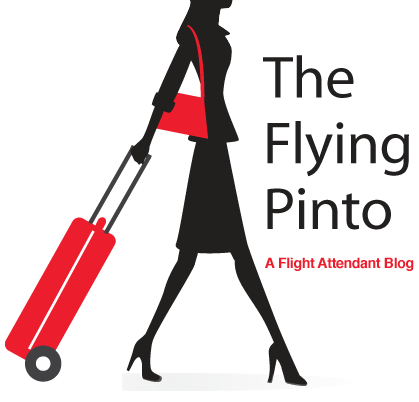
Here’s a scenario… You’re the passenger; I’m your flight attendant. After hearing the above statement, you may have gotten a little defensive. It’s the way our relationship has been set up and I think it’s a set up for failure. Nobody likes to be told what to do, especially without knowing why.
How do you feel about flight attendants, the airlines and their rules? Is your guard up as soon as you board? Have we flight attendants been friendly, or do you see us as big egos on power trips? It might not be well known but, flight attendants love people. If you could be a fly on the wall in the interview you’d hear them say, “I love people – I love to travel!” Everyone knows flight attendants tell you how to stow luggage, fasten seat belts, bring seat backs forward and put tray tables away. But “Why,” you ask?
The FAA (federal aviation administration) governs the entire airline industry. The multitude of rules are put in place and flight attendants must adhere to all of them. Flight attendants are the informers. The FAA does random checks rides on U.S. commercial flights. If flight attendants fail to inform any passengers of these Federal Aviation Regulations (or FARs) then the flight attendants can be fined thousands of dollars. The airline is also fined so guess who gets fined and disciplined? Let’s use the example of when you get up to go to the lav and the seat belt sign is on. Your flight attendant informs you, “sir, the seat belt sign is illuminated.” You say, “it’s an emergency.” She says, “the seat belt sign is illuminated,” sounding like a broken record. You now stare at each other like there’s a language barrier; essentially there is. If the flight attendant tells you, “ok, just be careful,” she has just given you permission to get out of your seat as long as you are “careful”. This opens the airline up for a law suit should you get hurt because of turbulence. What should you do if it is an emergency? I’m still not going to give you permission but, once you’re informed you are free to make up your own mind and it’s up to you. What about all the other rules? Here’s a quick break down of the reasons behind those airline rules we love to hate:
Properly stow your luggage: All bags must be properly stowed prior to push back. It’s probably obvious why the bags in the overheads must fit properly…so the bins can close. Your smaller carry on needs to fit under the seat in front of you because the aisle must be free and clear in the case of airplane evacuation. Sound silly? Well, let me ask you this. Did you know that the FAA conducts scheduled drills yearly with EVERY U.S. commercial airline? Reason being, each aircraft type must be able to evacuate within a specific amount of time, this is how the FAA determines how many flight attendants are needed to make up a “minimum crew,” the amount of flight attendants required for each flight. Flight attendants can successfully evacuate a full wide body aircraft in seconds. Having bags properly stowed saves more time than most people realize.
Seat backs and tray tables forward: I once saw a skit where a comedian leans back as if sitting in an airline seat and says, “dead;” leans upright and says, “alive.” Back and forth, back and forth… “dead, alive, dead, alive…” Very funny, but for the same reason we need luggage stowed, we need your seat and tray table locked and upright. Your seat leaning back will slow down the passengers behind you; your tray table being down will slow you and other passengers from evacuating quickly.
Place your oxygen mask on yourself first: This is not only a great analogy for life, it’s also an extremely important rule for flying. Time of useful consciousness is as little as thirty seconds at 35,000 feet. If you don’t put your mask on first, you won’t be conscious to put an oxygen mask on someone else. Most likely if the cabin loses pressure, it’s not a life or death situation. Put your mask on and then place one on your child.
I hope it helps you understand why some of these regulations are in place. You may not agree with them all and that’s fine; but I hope at least there’s a better understanding as to where flight attendants are coming from. It’s entirely black and white for us when it comes to an F.A.R. With some things, we may be able to think outside the box, but not when it comes to dealing with the F.A.A. because our jobs, wallets and lives are on the line.
Does it help to know the whys? Does anything else boggle your mind when it comes to the airlines? Let me know in comments and I’ll answer them in a future post. Also, if you love Jetlagged Comics as much as I do you can order t-shirts, travel mugs and more at the Jetlagged Comic Store.


 Facebook
Facebook Twitter
Twitter RSS
RSS Email
Email
I don’t have a problem with most of the requirements given for take off and landing. But the one regarding small electronic devices is pure BS. While the FAA can’t give a good reason for requiring it, they still insist all items be turned off. Even pilots and crew are moving to iPads and similar devices for flight plans, etc. and to use the excuse that electronics change so rapidly that its not possible to keep up with them is more BS.
At least in the US, all electronic devices must comply or at least be tested by the FCC for interference prior to sale in the US and elsewhere. There are similar agencies in Canada and Europe. To fall back on this excuse sounds a lot like “because I said so…” to most passengers. As with most government agencies, they’re just too bureaucratic to make a change (unless it involves allowing knives on planes).
A simple solution to the electronic “debate” would be to allow certain common devices (you know, like the ones the pilot is using) to be used during take off and landing. They do put an Airplane Mode on them for a reason.
You might have an issue with the FAA regulation, SS–but the Flight Attendant is still required to have you turn them off. I hope you don’t give her a hard time–she didn’t make the rule!
The most critical (i.e. dangerous) times of flight are take off and landing – the exact times the FAA and Flight Attendants require that electronics be turned off. No matter with interference of the aircraft… Turned ON electronics will interfere with all passengers and crew from evaucating an aircraft in the amount of time that SAVES lives.
SS- a lot of people feel as you do about the electronic devices and you are correct, they don’t really interfere with aircraft operations.. But we do need them off and stowed because as the article states, most accidents happen below 10,000 ft during take off and landings.. So we need your full attention so you know what to do incase something happens.
Great comment from RR above about needing full attention in between the 10,000 ft zone, so true. Also everybody (especially if you have traveled via plane before) usually knows the rules and regulations of flights, so what is the point of getting upset? you know its coming so deal with it. These people who get upset and cause a scene should realize that obviously rules are made to keep them safe, and should be grateful for your assistance in helping them to remember to abide by the FAA safety rules. Thanks for the blog TFP
Having your electronic devices turned on is not necessarily because of interference with the aircraft itself, but like RR has mentioned, full attention needs to be on your safety. If something were to go wrong during take off and landing then you have more of a chance to react and protect yourself.
The problem I have with most of the “rules” is the inconsistency between airlines. As an example, on Southwest you can’t put anything in the seat back pocket , including laptops and eReaders, but you can have a pair of noise-reducing headsets on your head and powered on. Whereas on other airlines you can put whatever you want in the seat pocket but can’t have anything on that has a power switch.
To the electronic device debate, I’ll have to see if I can find a report that came out of NASA Ames several years ago. They did a survey of flight incidents and reported on the navigation and equipment errors that appeared to be traceable to electronics on in the aircraft. Of course, this may be a case of correlation w/o causation, but it is an interesting data point.
As a very recent employee of an aerospace company who does make those cockpit electronics, there very much is a good reason for rules regulating the use of electronics onboard.
The most recent cockpits are actually fairly “hardened” to interference from these devices. However, older aircraft aren’t and by older, I mean aircraft still very much in sevice and which will be in service for some time to come yet.
Yes, pilots are using iPads. They are not using them with Wifi or Data turned on in the 10,000 feet zone. The iPad is also a very well built device which doesn’t radiate signals unnecessarily. Not all tablet devices are nearly as well built as the iPad in this area.
You cannot test and then regulate all devices reliably. So it is necessary to have some “lowest common denominator” rule and that’s turning the damn things off below 10,000 feet.
It’s an appropriate rule and fighting it just makes you look craven and silly.
Thank you for your valuable input Greg! Cheers!
Great post! It’s nice to know the reasoning behind the rules, instead of simply being told what to do.
What about water landings? There was a plane that landed in the Neva River in St Petersburg, Russia. The pilot saved all the people and everyone was evacuated. Now if you didn’t put your tray table away and put your seat up, maybe you don’t evacuate in time and the plan sinks. Hope you are a good swimmer.
Time is of the essence in emergency situations and even silly rules can have a big impact during such emergencies.
However, instead of a flotation device I would much rather have a parachute or some other device that keeps me from smashing into anything (water or land) at high speeds. 😉
What about water landings? There was a plane that landed in the Neva River in St Petersburg, Russia. The pilot saved all the people and everyone was evacuated. Now if you didn’t put your tray table away and put your seat up, maybe you don’t evacuate in time and the plane sinks. Hope you are a good swimmer.
Time is of the essence in emergency situations and even silly rules can have a big impact during such emergencies.
However, instead of a flotation device I would much rather have a parachute or some other device that keeps me from smashing into anything (water or land) at high speeds. 😉
This is really interesting. I always wondered about the seats having to be in the upright position and trays being locked. Great read.
Problem is that if flight attendants explained the rules, some paxs still would not accept it